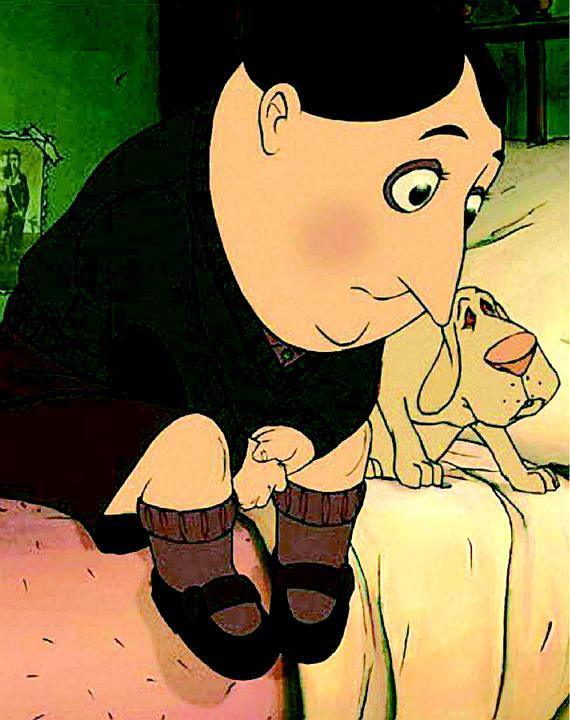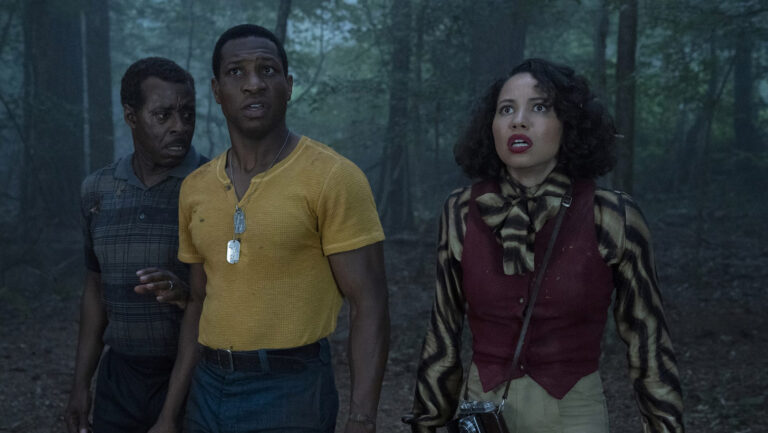Sneaking into the country by way of France, The Triplets of Belleville is a serendipitous, thoroughly unexpected treat that will, hopefully, find its audience. France is one of those countries that understands that things like animation and comic books are not mere “kid's stuff,” but unique art forms capable of conveying a wide range of stories and emotions. While there's nothing in the PG-13-rated Triplets that brands it an “adult” cartoon, there's precious little to attract the ADD-addled legions of Nickelodeon-raised rugrats: There are no talking animals, no video game-inspired action segments, no fart jokes. A certain breed of child would probably appreciate the tiny wonders of The Triplets of Belleville, but adults are more apt to revel in its low-key charm and queer wit.
The gloriously lumpen animation (hand drawn with only the occasional computerized tweak) isn't the only old-fashioned element to the film. Set in a sort of a timelost '50s atmosphere, the film looks and feels like some silent film comedy that's been lost in a vault somewhere for decades. Inspired by (among other things) the works of French silent film comedian Jacques Tati (Mr. Hulot's Holiday, Playtime), there is no actual dialogue in Triplets, so those frightened off by the prospect of subtitles are advised to give this Gallic gift a looksee.
The simple story centers around our heroine, a quiet, duty-bound granny named Madame Souza. She has been charged with raising her terminally morose grandson Champion, whose parents (in typical Disney style) have expired. The boy's only joy seems to come from his love of bicycles, so Madam Souza turns into the world's most unlikely coach, putting her grandson through a rigorous two-wheeled training regimen. Years down the line, Champion has grown into his namesake, becoming a freakishly skinny cycling machine ready to take the racing world by storm.
Unfortunately, during his first outing in the world famous Tour de France, Champion is kidnapped by two mysterious men in black. Naturally, Madame Souza and her faithful but obese dog Bruno set off to rescue him. Madame Souza's trans-oceanic quest leads her to the metropolis known as Belleville, a comedic mishmash of New York and Toronto. There, she meets with the once-renowned “Triplets of Belleville,” three eccentric music hall stars from the '30s, and runs afoul of the dreaded French mafia.
Despite its simple story (the film is little more than an extended chase scene) and brief run time (a breezy 80 minutes), The Triplets of Belleville is an unending source
of visual wonders and delights. Unlike the increasingly formulaic work of Disney, there's no guessing what might appear around any colorful corner here: exploding frogs, singing seniors, beret-wearing gangsters. Most, if not all of this film's charm lies in its quirky, thoroughly unpredictabe characters and situations. We start out with the plump, club-footed tenacity of Madame Souza and end up with a trio of elderly performers scatting their way through a gleefully destructive car chase.
Writer/director Sylvain Chomet piles on the references, borrowing bits from The Aristocats, Max Fleischer's Betty Boop, Warner Brothers' Silly Symphonies, Marcel Marceau, Buster Keaton and about a hundred other sources. The music in Triplets—an innovative, rhythm-heavy mixture of the Andrews Sisters and Stomp— is worth the price of admission alone. For fans of sophisticated animation, the witty, wordless wonder of The Triplets of Belleville is tres magnifique!




